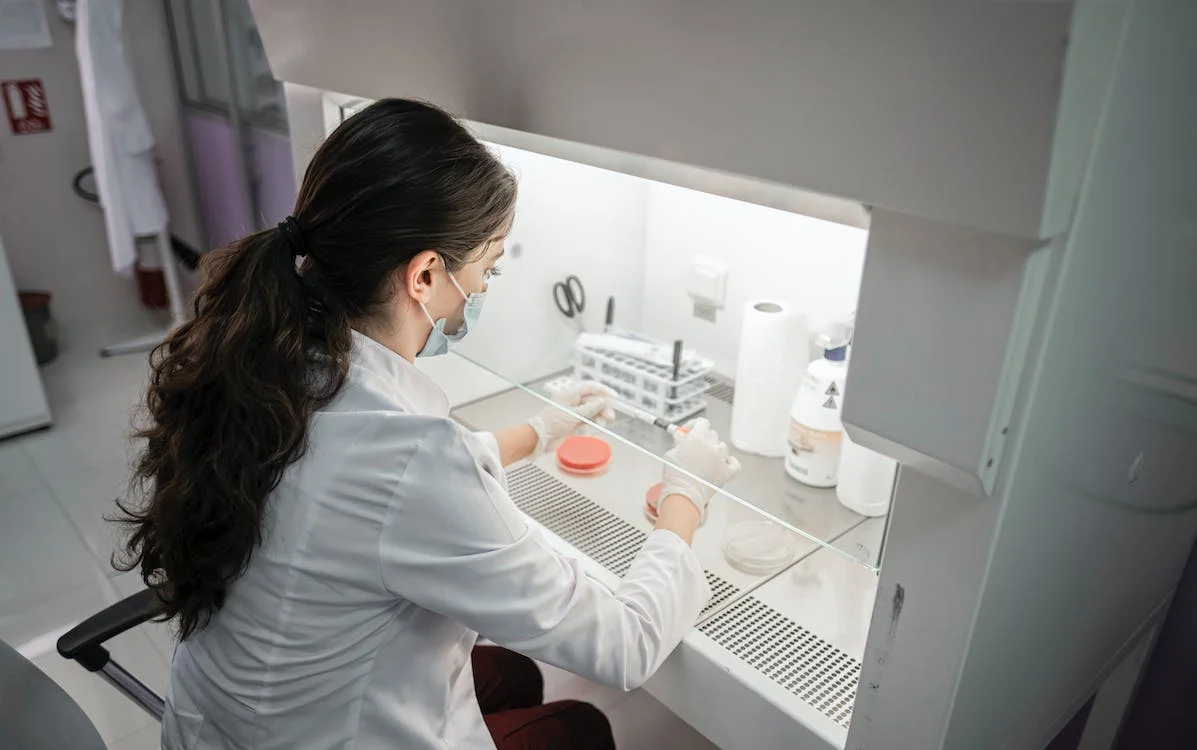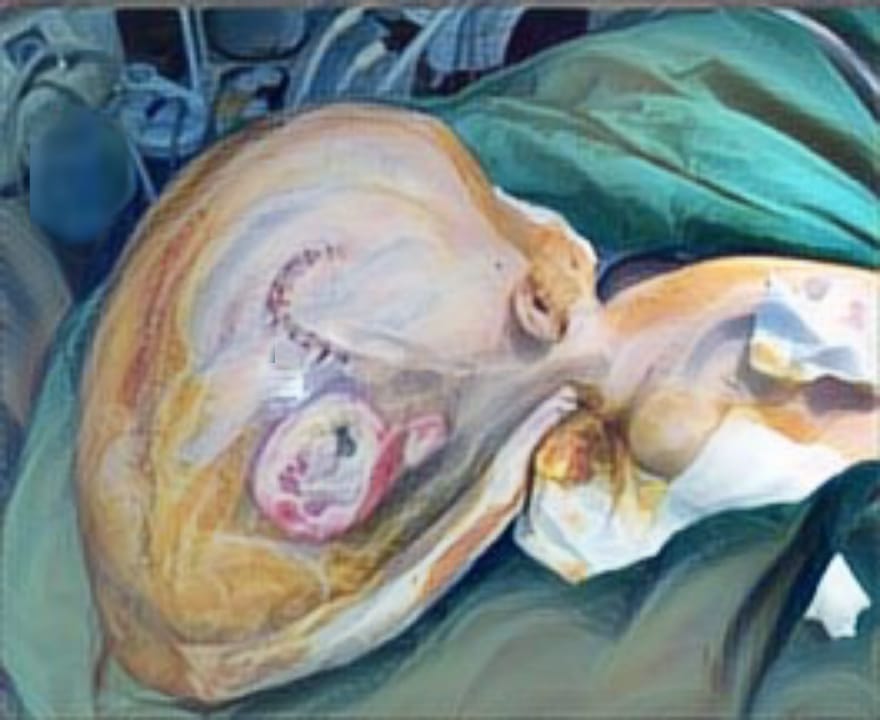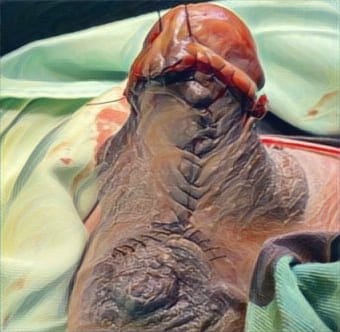THE USE OF AMNIOTIC MEMBRANE FOR WOUND HEALING IN BURN INJURIES

Downloads
HIGHLIGHTS:
1. An organic bandage that can be helpful in the treatment of burn wounds is amniotic membrane.
2. The mechanisms of amniotic membrane for the treatment of burns and wounds should be investigated and understood in more detail.
ABSTRACT:
Introduction: Burn injuries are associated with significant mortality and morbidity around theworld. The care of burn wounds requires a great amount of medical resources, therefore it is important to find a wound dressing that accelerates wound healing and is readily available.
Methods: Literature search from online databases using relevant keywords about the usage of amniotic membranes in burn patients.
Results: Research has shown that it contains antimicrobial properties that could be of great benefit in burn patients and is compatible to use in developing countries because it is readily available, easy to obtain and sterilize, able to cover wounds of large size, protects the wound from excessive water and electrolyte loss, reduces pain intensity, requires fewer dressing changes and is also more cost effective than conventional dressings.
Conclusion: Amniotic membrane is a biological dressing that can be useful in the treatment of burn wounds. Further research should be conducted to investigate and understand the mechanisms of amniotic membrane for burn and wound care.
Peck MD. Epidemiology of burns throughout the world. Part I: Distribution and risk factors. Burns. 2011;37(7):1087-1100.
Wardhana A, et al. The epidemiology of burns in Indonesia's national referral burn center from 2013 to 2015. Burns Open. 2017 Oct 1;1(2):67-73.
World Health Organization. Injuries and Violence Prevention Department. The injury chart book: a graphical overview of the global burden of injuries. Geneva: Dept. of Injuries and Violence Prevention,Noncommunicable Diseases and Mental Health Cluster, World Health Organization; 2002. Available at http://apps.who.int/iris/ bitstream/10665/42566/1/92415622 0X.pdf.
Ghalambor AA, et al. The amniotic membrane: a suitable biological dressing to prevent infection in thermal burns. Med J Islamic Acad Sci. 2000 January 1;13(3):115-8.
Mohammadi A, et al. Human Amniotic Membrane Dressing: an Excellent Method for Outpatient Management of Burn Wounds. Iranian Journal of Medical Sciences, 2009; 34(1): 61-64.
Mohammadi AA, Mohammadi MK. How Does Human Amniotic Membrane Help Major Burn Patients Who Need Skin Grafting: New Experiences. In: Spear M, editor. Skin Grafts - Indications, Applications and Current Research [Internet]. London: IntechOpen; 2011 [cited 2022 May 19]. Available from: https://www.intechopen.com/chapter s/18941. doi: 10.5772/23107
Cirman T, et al. Amniotic membrane properties and current practice of amniotic membrane use in ophthalmology in Slovenia. Cell Tissue Bank,2014.15:177–192
Davis JW. Skin transplantation with a review of 550 cases at the Johns Hopkins Hospital. Johns Hopkins Med J. 1910;15:307
Douglas B: Homografts of fetal membranes as a covering for large wounds especially those from burns: An experimental and clinical study. J Tenn Med Assoc 45:230-235, 1952.
Halim AS, et al. Biologic and synthetic skin substitutes: An overview. Indian J Plast Surg. 2010 Sep;43(Suppl):S23-8.
Branski LK, et al. Amnion in them treatment of pediatric partial-thickness facial burns. Burns. 2008;34(3):393-399.
Rezazadeh D, et al. Autologous amniotic membrane: An accelerator of wound healing for prevention of surgical site infections following Cesarean delivery. Med Hypotheses 2020 Apr;137:109532.
Koob TJ, et al. Biological properties of dehydrated human amnion/chorion composite graft: implications for chronic wound healing. Int Wound J. 2013;10(5):493-500.
Solomon A, et al.(2001) Suppression of interleukin 1 alpha and interleukin 1 beta in human limbal epithelial cells cultured on the amniotic membrane stromal matrix. Br J Ophthalmol 85: 444-449.
Malhotra C, Jain AK. Human amniotic membrane transplantation: Different modalities of its use in ophthalmology. World J Transplant. 2014 June 24;4(2): 111-21.
Tseng SC, et al. How does amniotic membrane work? Ocul Surf 2004;2(3):177–87.
Talmi YP, et al. Antibacterial properties of human amniotic membranes. Placenta. 1991 May-Jun;12(3):285-8.
Sangwan VS, et al. Amniotic membrane transplantation: A review of current indications in the management of ophthalmic disorders. Indian J Ophthalmol. 2007;55:251–60.
Haberal M, et al. The use of silver nitrate incorporat amniotic membrane as a temporary dressing.Burns Incl Therm Inj 1987;13:159–63.
Haugh AM, et al. Amnion Membrane in Diabetic Foot Wounds: A Meta-analysis. Plast Reconstr Surg Glob Open. 2017 25;5(4):e1302.
Mao Y, et al. Antimicrobial Peptides Secreted From Human Cryopreserved Viable Amniotic Membrane Contribute to its Anti-bacterial Activity. Sci Rep. 2017 Oct 20;7(1):13722.
Jay RM, Huish JP, Wray JH. Amniotic membrane in clinical medicine: History, current status, and future use. Mooradian DL, editor. In Woodhead Publishing Series in Biomaterials. Extracellular Matrix-derived Implants in Clinical Medicine. Woodhead Publishing. 2016.(151-176)
Ruiz-Cañada C,et al. Chronic Wound Healing by Amniotic Membrane: TGF-α and EGF Signaling Modulation in Re-epithelialization. Front Bioeng Biotechnol. 2021 July 6;9:689328.
Mahandaru D, Wardhana A. Nosocomial infection in burn unit of Cipto Mangunkusumo Hospital, Jakarta. Jurnal Plastik Rekonstruksi. 2012;1(3).
Zelen CM, et al. Treatment of chronic diabetic lower extremity ulcers with advanced therapies: a prospective, randomized, controlled, multi-centre comparative study examining clinical efficacy and cost. Int Wound J. 2016 Apr;13(2):272-82.
Gutiérrez-Moreno S, et al. Cost-benefit analysis of amniotic membrane transplantation for venous ulcers of the legs that are refractory to conventional treatment. Actas Dermosifiliogr. 2011,102(4):284-8.
Ramakrishnan KM, Jayaraman V. Management of partial-thickness burn wounds by amniotic membrane: a cost-effective treatment in developing countries. Burns. 1997;23 Suppl 1:S33- S36.
Jay RM, et al. Amniotic membrane in clinical medicine: History, current status, and future use. Mooradian DL, editor. In Woodhead Publishing Series in Biomaterials. Extracellular Matrix- derived Implants in Clinical Medicine. Woodhead Publishing. 2016; 151-176.
Hadjiiski O, Anatassov N. Amniotic membranes for temporary burn coverage. Annals of Burns and Fire Disasters. 1996.
Add PJ, e al. Amniotic membrane grafts, "fresh" or frozen? A clinical and in vitro comparison. Br J Ophthalmol. 200185(8):905-7.
Sangwan VS, et al. Amniotic membrane transplantation, Indian Journal of Ophthalmology:2007; 55(4): 251-60.
Tseng SC, et al. How does amniotic membrane work? Ocul Surf 2004;2(3): 177–87.
Yue, C., Guo, Z., Luo, Y., Yuan, J., Wan, X., & Mo, Z. (2020). c-Jun Overexpression Accelerates Wound Healing in Diabetic Rats by Human Umbilical Cord-Derived Mesenchymal Stem Cells. Stem cells international, 2020, 7430968.
Lee SH, Tseng SC. Amniotic membrane transplantation for persistent epithelial defects with ulceration. Am J Ophthalmol. 1997;123(3):303-12.
Elkhenany H, El-Derby A, Abd Elkodous M et al. Applications of the amniotic membrane in tissue engineering and regeneration: the hundred-year challenge. Stem Cell Res Ther 13, 8 (2022).
Copyright (c) 2022 Almas Nur Prawoto, Ishandono Dachlan

This work is licensed under a Creative Commons Attribution-ShareAlike 4.0 International License.
JURNAL REKONSTRUKSI DAN ESTETIK by Unair is licensed under a Creative Commons Attribution-ShareAlike 4.0 International License.
- The journal allows the author to hold copyright of the article without restriction
- The journal allows the author(s) to retain publishing rights without restrictions.
- The legal formal aspect of journal publication accessbility refers to Creative Commons Attribution Share-Alike (CC BY-SA)



















